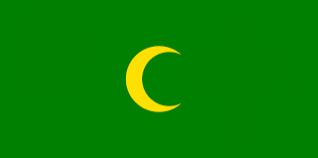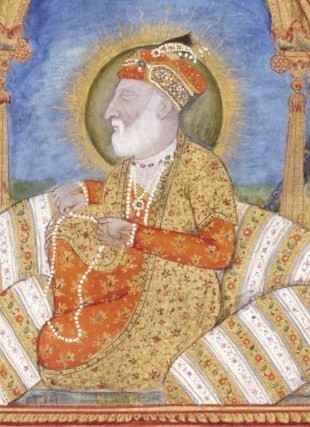| |||||
| Centuries: | |||||
|---|---|---|---|---|---|
| Decades: | |||||
| See also: | List of years in India Timeline of Indian history | ||||
Events in the year 1806 in India.
| |||||
| Centuries: | |||||
|---|---|---|---|---|---|
| Decades: | |||||
| See also: | List of years in India Timeline of Indian history | ||||
Events in the year 1806 in India.
| | This section is empty. You can help by adding to it. (March 2022) |
| | This section is empty. You can help by adding to it. (September 2016) |

The Mughal emperors were the supreme monarchs of the Mughal Empire in the Indian subcontinent, mainly corresponding to the modern countries of India, Pakistan, Afghanistan and Bangladesh. The Mughal rulers styled themselves as Badshah or Shahanshah, a title usually translated from Persian as "emperor". They began to rule parts of India from 1526, and by 1707, ruled most of the sub-continent. After that they declined rapidly, but nominally ruled territories until the Indian Rebellion.

Akbar II, also known as Akbar Shah II, was the nineteenth Mughal emperor from 1806 to 1837. He was the second son of Shah Alam II and the father of Bahadur Shah II, who would eventually succeed him and become the last Mughal emperor.

Shah Alam II, also known by his birth name Ali Gohar, or Ali Gauhar, was the seventeenth Mughal emperor and the son of Alamgir II. Shah Alam II became the emperor of a crumbling Mughal Empire. His power was so depleted during his reign that it led to a saying in the Persian language, Sultanat-e-Shah Alam, Az Dilli ta Palam, meaning, 'The empire of Shah Alam is from Delhi to Palam', Palam being a suburb of Delhi.

Mughal painting is a style of painting on paper confined to miniatures either as book illustrations or as single works to be kept in albums (muraqqa), from the territory of the Mughal Empire in South Asia. It emerged from Persian miniature painting and developed in the court of the Mughal Empire of the 16th to 18th centuries. Battles, legendary stories, hunting scenes, wildlife, royal life, mythology, as well as other subjects have all been frequently depicted in paintings.

The Mughal dynasty comprised the members of the imperial House of Babur (Persian: خاندانِ آلِ بابُر; Khāndān-e-Āl-e-Bābur), also known as the Gurkanis, who ruled the Mughal Empire from c. 1526 to 1857.

Joanna Nobilis Sombre, popularly known as Begum Samru, a convert Catholic Christian started her career as a nautch (dancing) girl in 18th century India, and eventually became the ruler of Sardhana, a small principality near Meerut. She was the head of a professionally trained mercenary army, inherited from her European mercenary husband, Walter Reinhardt Sombre. This mercenary army consisted of Europeans and Indians. She is also regarded as the only Catholic ruler in India, as she ruled the principality of Sardhana in 18th- and 19th-century India.

Allahabad Fort is a fort built by the Mughal emperor Akbar at Prayagraj in 1583. The fort stands on the banks of the Yamuna, near its confluence with the Ganges. It is classified by the Archaeological Survey of India as a monument of national importance.

Abu'l-Fath Jalal-ud-din Muhammad Akbar, popularly known as Akbar the Great, and also as Akbar I, was the third Mughal emperor, who reigned from 1556 to 1605. Akbar succeeded his father, Humayun, under a regent, Bairam Khan, who helped the young emperor expand and consolidate Mughal domains in the Indian subcontinent.

This is a list of the flags of the Mughal Empire, which had a number of imperial flags and standards. The principal imperial standard of the Mughals was known as the alam. It was primarily moss green. It displayed a lion and sun facing the hoist of the flag. The Mughals traced their use of the alam back to Timur. The imperial standard was displayed to the right of the throne and also at the entrance of the Emperor's encampment and in front of the emperor during military marches.

Zafar Mahal, in Mehrauli village, in South Delhi, India, is considered as the last monumental structure built as a summer palace during the fading years of the Mughal era. The building has two components namely, the Mahal or the palace, which was built first by Akbar Shah II in the 18th century, and the entrance gate that was reconstructed in the 19th century by Bahadur Shah Zafar II, popularly known as "Zafar" meaning ‘Victory’. It has a forlorn history because Bahadur Shah Zafar, who wished to be buried in the precincts of the Zafar Mahal (palace) and the famous Dargah of Khwaja Qutubuddin Bakhtiar Kaki in Mehrauli, Delhi, was deported by the British to Rangoon, after the First War of Indian Independence in 1857, where he died of old age. The monument today is in a neglected and ruined state, locals play cricket and gamble freely inside the protected monument. The 18th-century palace has been all but subsumed by unauthorised constructions.

The Mughal Empire was an early modern empire in South Asia. At its peak, the empire stretched from the outer fringes of the Indus River Basin in the west, northern Afghanistan in the northwest, and Kashmir in the north, to the highlands of present-day Assam and Bangladesh in the east, and the uplands of the Deccan Plateau in South India.

Mirza Mahmud Shah Bahadur, also known by his regnal name Shah Jahan IV, was the eighteenth Mughal emperor for a brief period in 1788 after Shah Alam II was deposed by Ghulam Kadir, Mahmud Shah Bahadur was the son of a former Mughal Emperor, Ahmad Shah Bahadur. He himself became emperor for a brief period in 1788 as a puppet of Ghulam Kadir, after Shah Alam II had been deposed and blinded. He was allegedly put to death in 1790 by order of Shah Alam II, supposedly for usurping his authority in 1788.

Lal Bangla are two imperial late-Mughal mausoleums located in Delhi, India, that are that protected monument under the Archaeological Survey of India.
Events in the year 1801 in India.
Ghulam Ali Khan was a nineteenth century Indian painter in Delhi. His painting career took place over the course of more than four decades, from 1817 to 1852. He was the last royal Mughal painter, and also painted in the Company style for British patrons.
Khulasat-ut-Tawarikh is a Persian language chronicle written by Sujan Rai in the Mughal Empire of present-day India. It deals with the history of Hindustan, and also contains details about the contemporary Mughal Empire. The author completed the work in 1695 CE, during the reign of Aurangzeb. An insertion about Aurangzeb's death was later added to the original copy by a transcriber.
Events in India in 1761
Ghulam Kadir, fully Ghulam Abd al Qadir Ahmed Khan, was a leader of the Afghan Rohilla during the late 18th century in the time of the Mughal Empire. He is particularly known for blinding the Mughal Emperor Shah Alam II and occupying and plundering Delhi for two and a half months in 1788.

The Moti Masjid is an 18th-century Mughal mosque located in Mehrauli, Delhi. Named for its white marble, the mosque was constructed during the reign of Bahadur Shah I, in the vicinity of the dargah of Qutbuddin Bakhtiar Kaki.